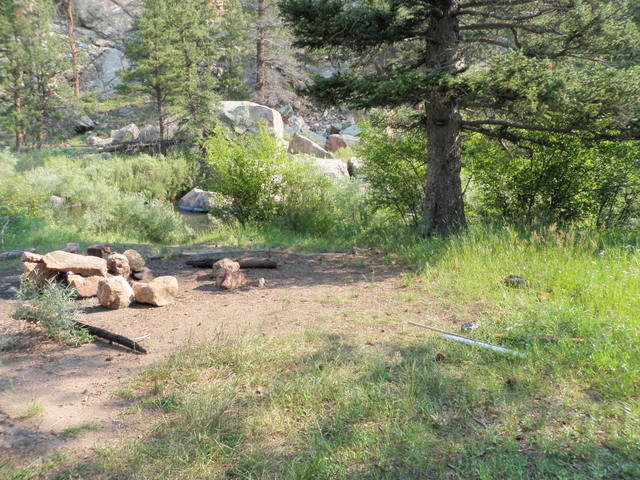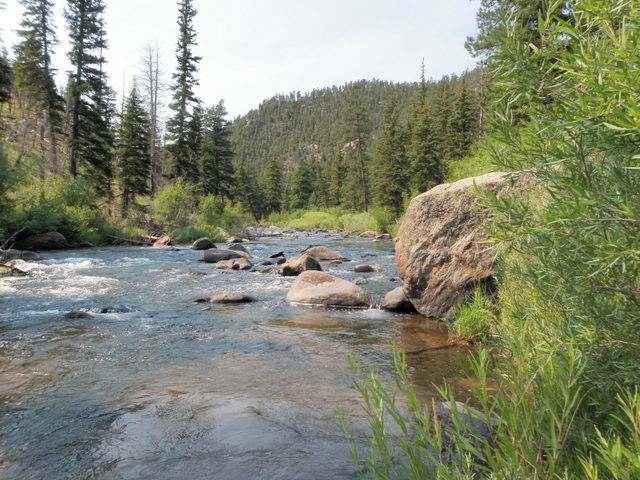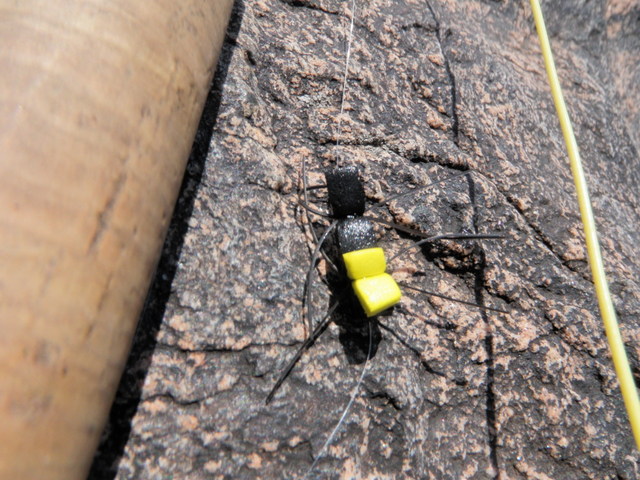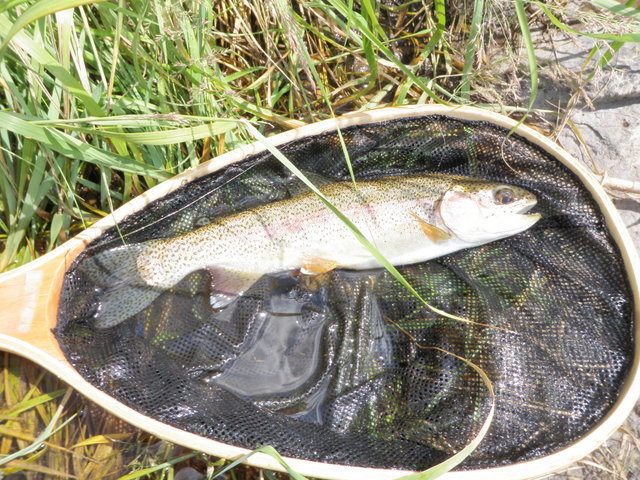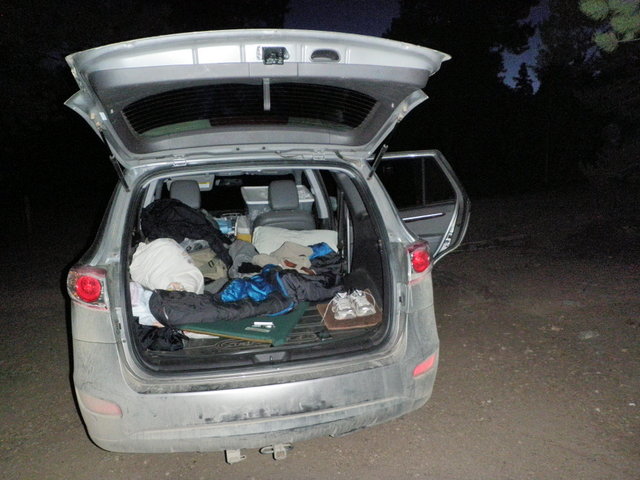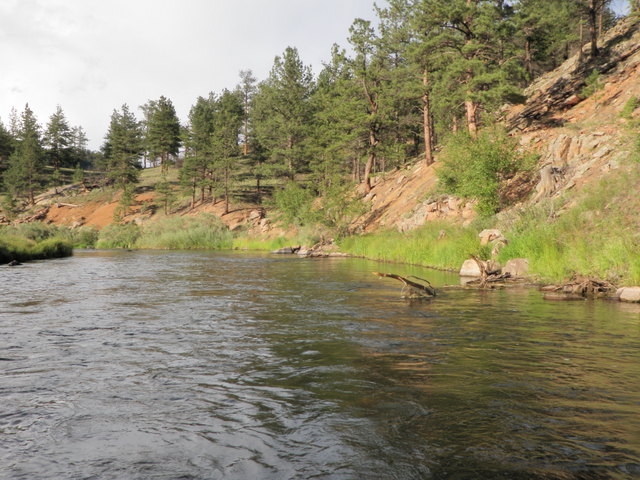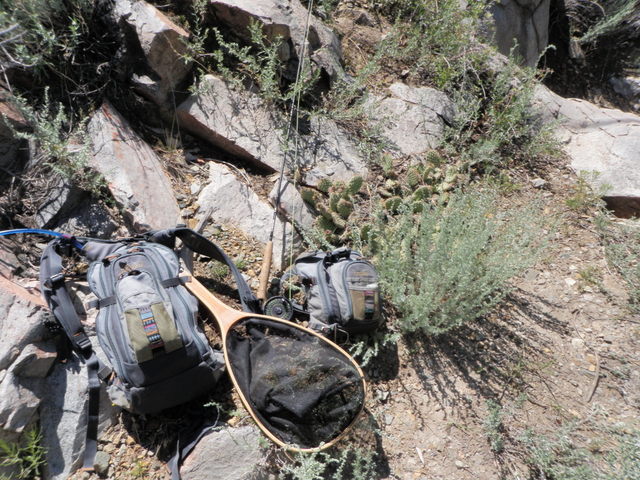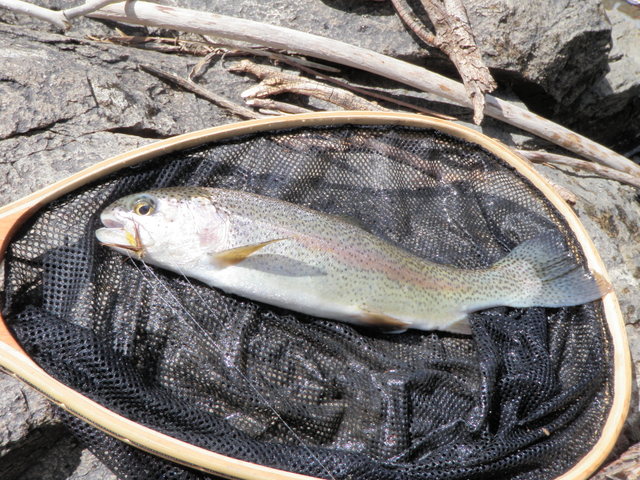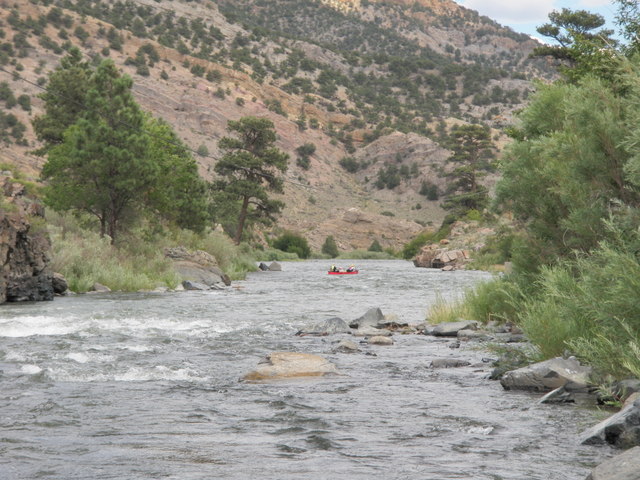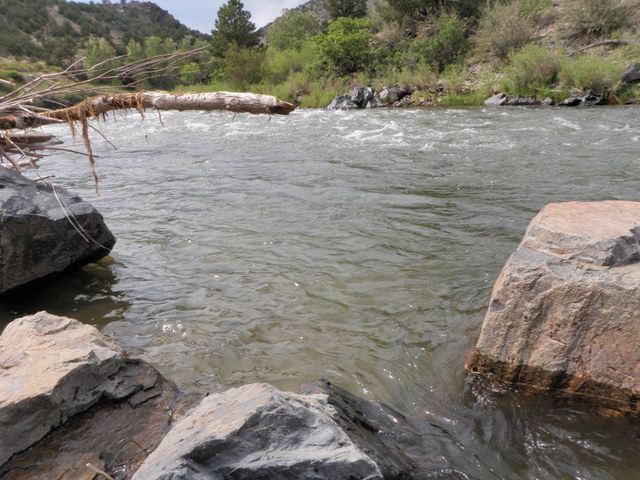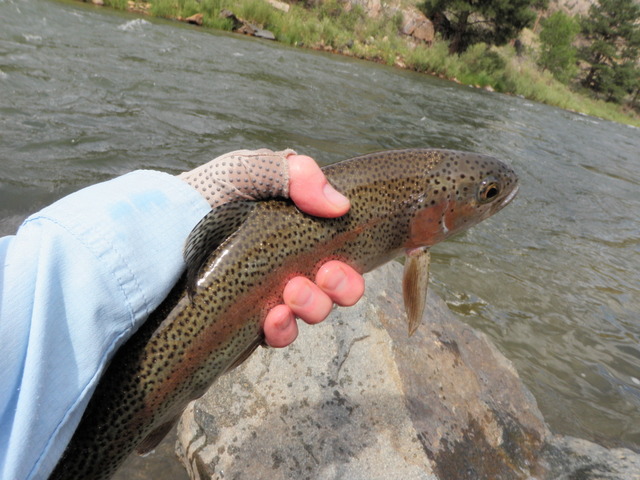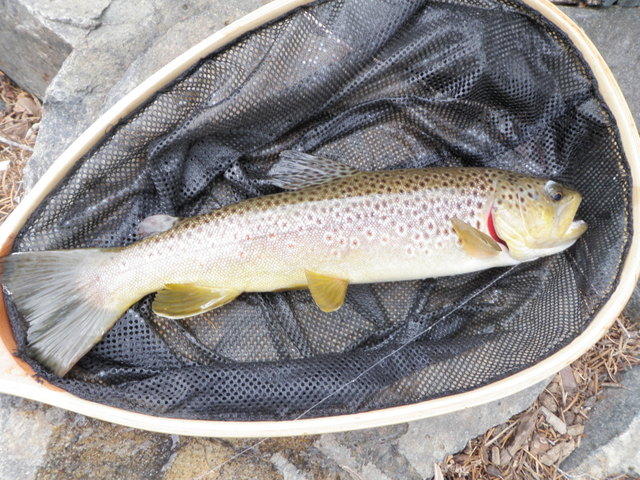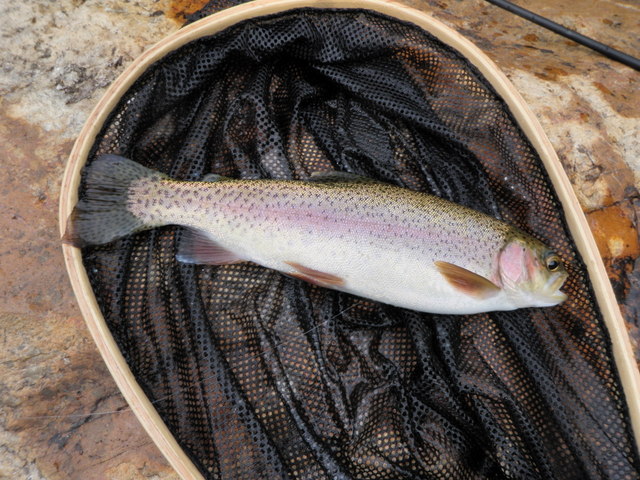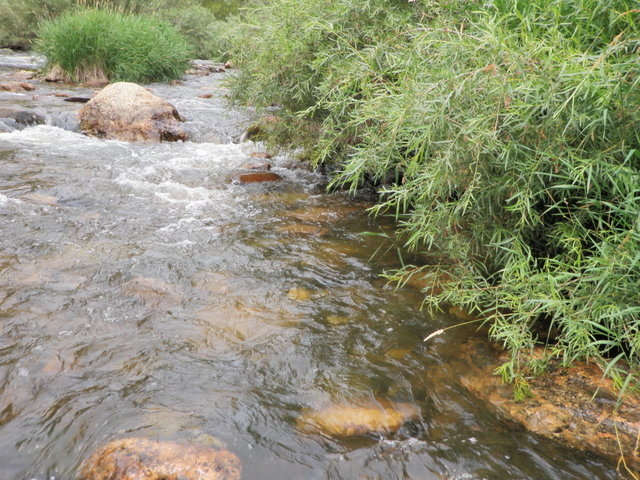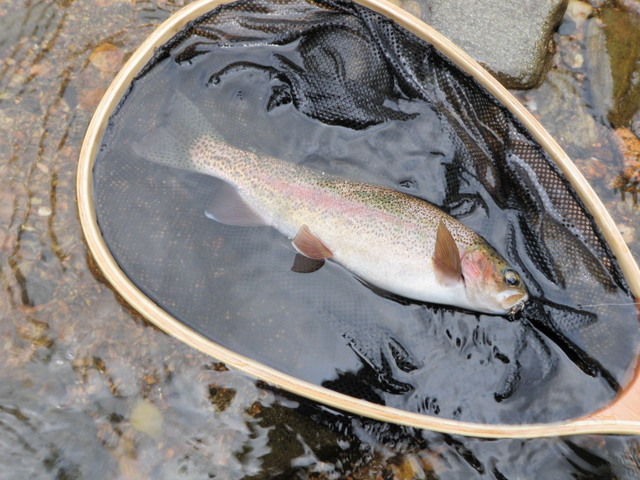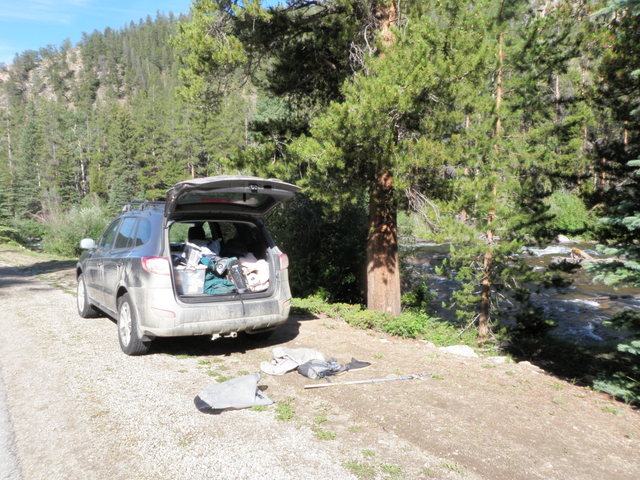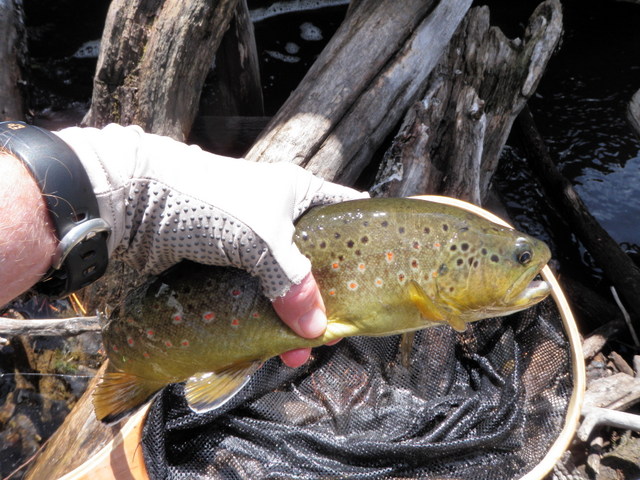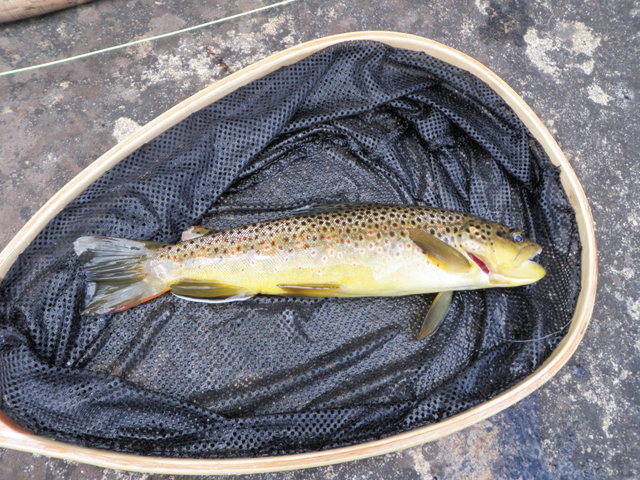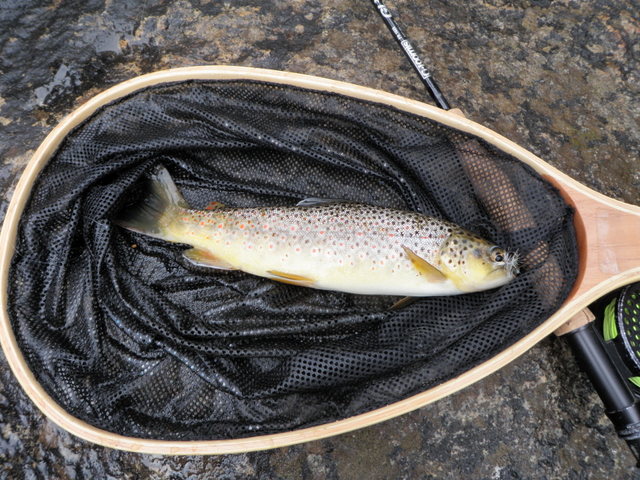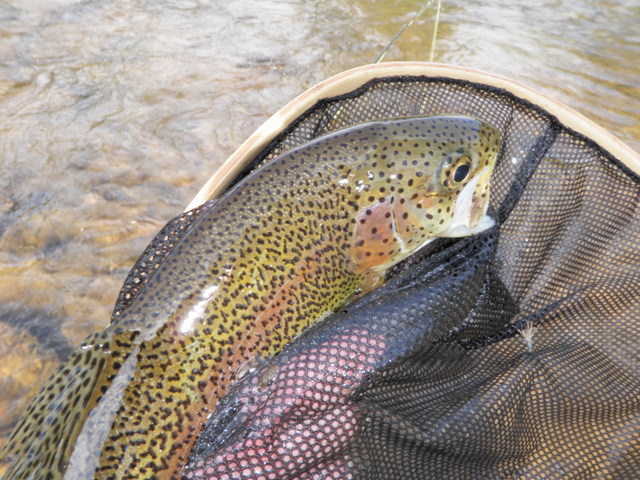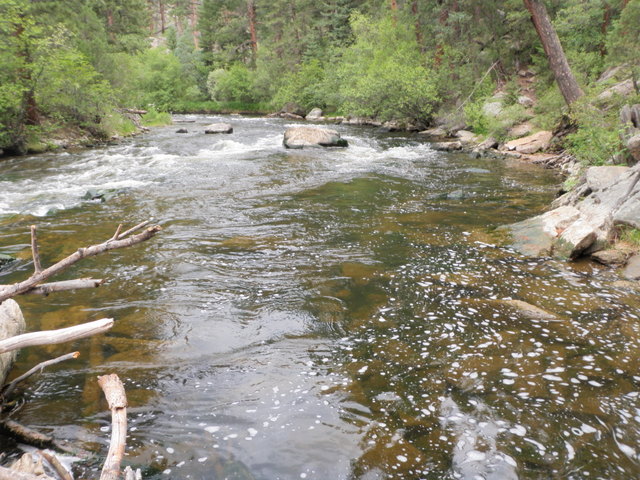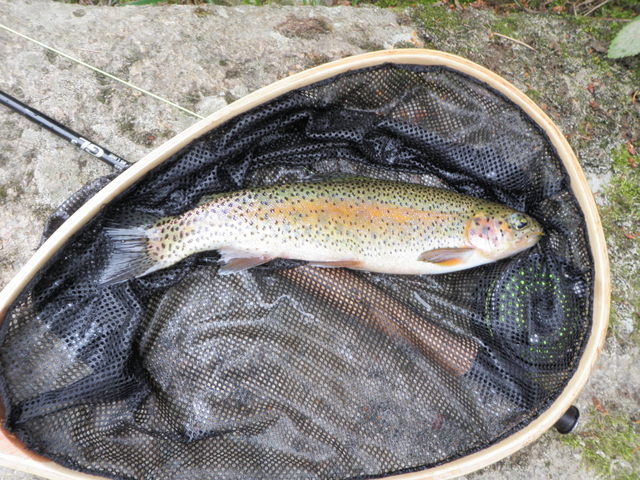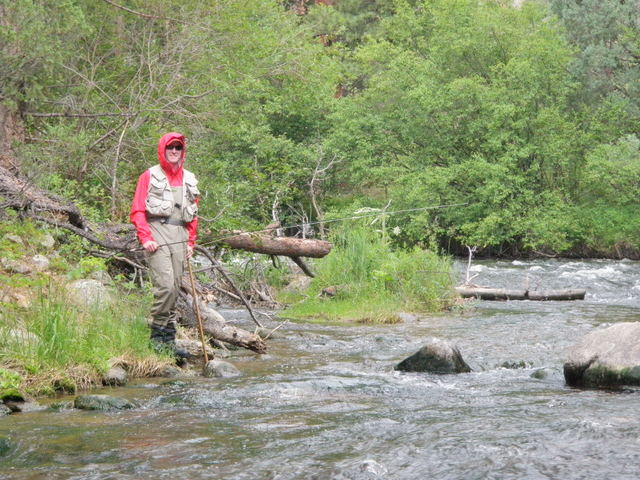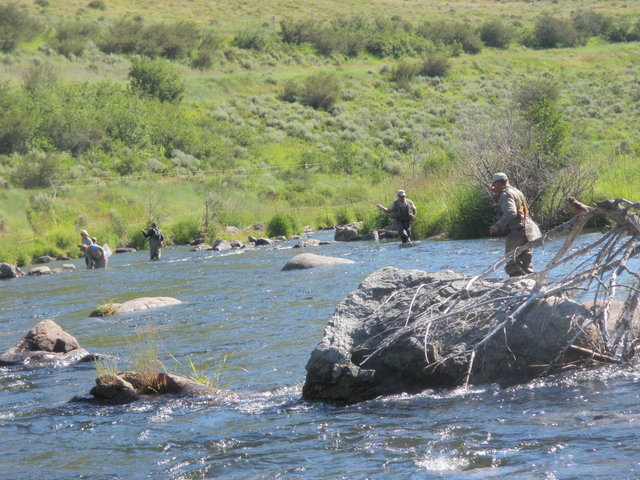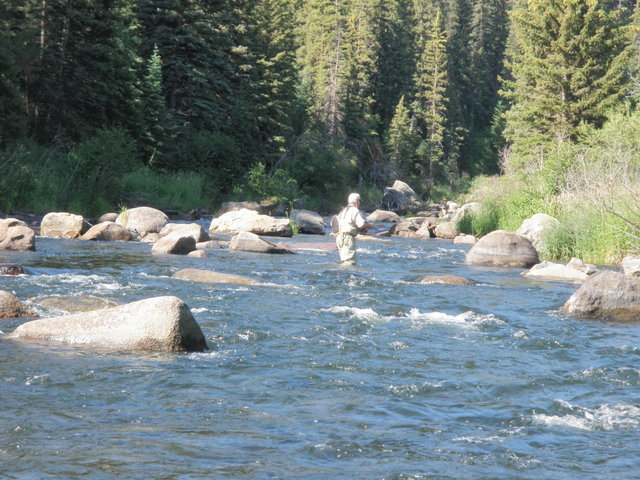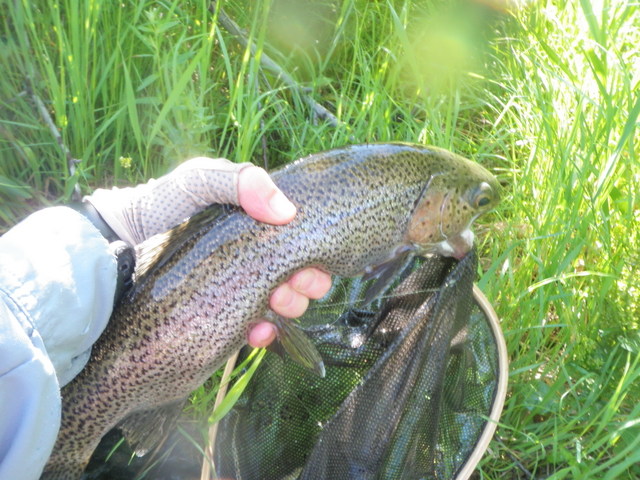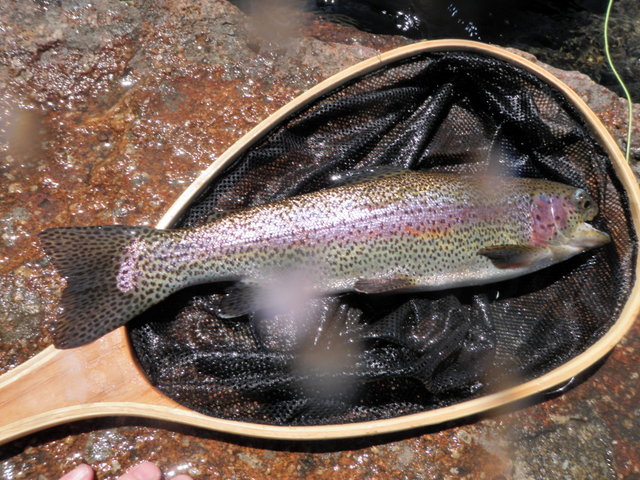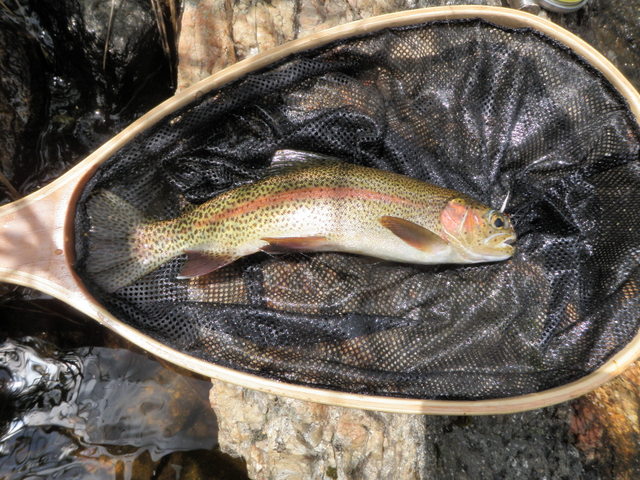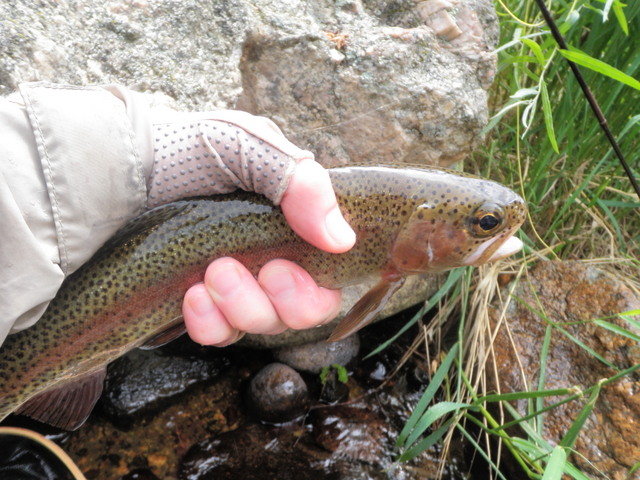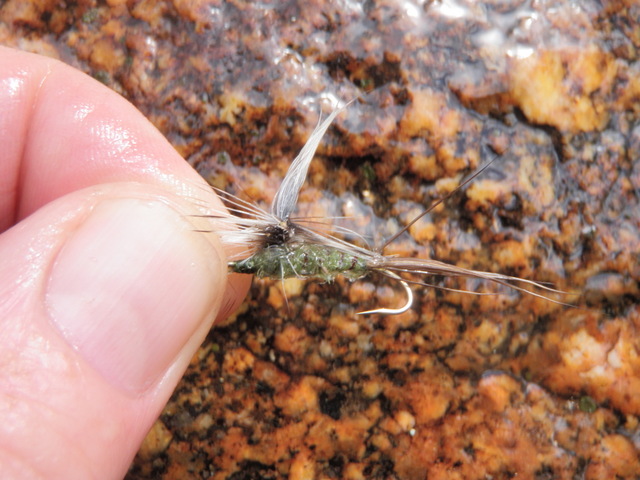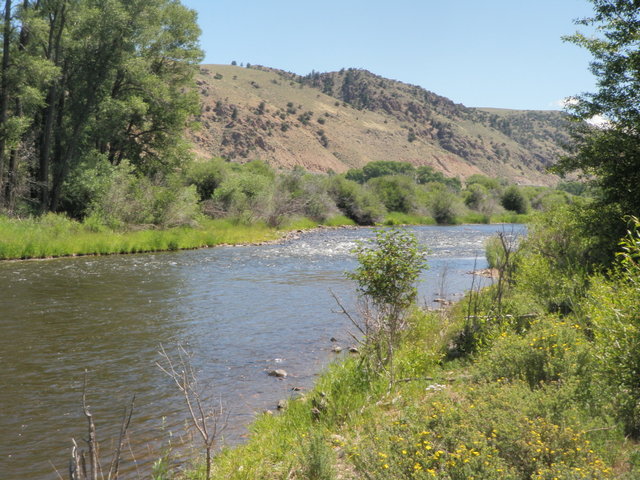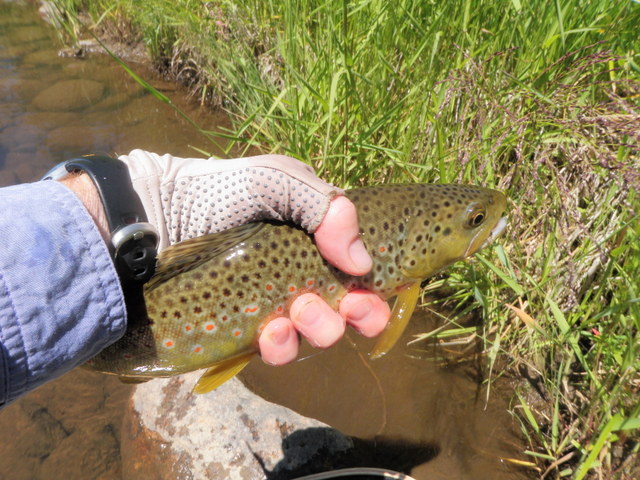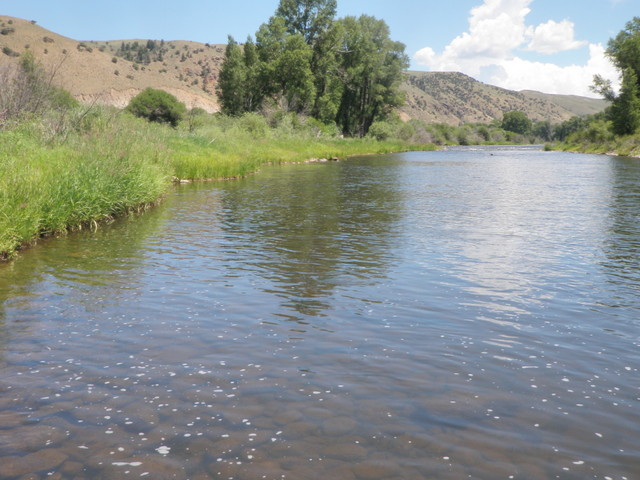Time: 10:00AM – 4:00PM
Location: Above cascade to place where I stashed my backpack
Fish Landed: 40
South Platte River 08/14/2013 Photo Album
The thing about the Wildcat Canyon area of the South Platte is the effort it requires to reach this beautiful stretch of water. I’ve made this excursion quite a few times and it always takes at least an hour to hike the three mile Platte River Trail to reach the public stretch of the river. Perhaps my backpack is not the correct size or maybe I haven’t fit it properly, but I’m always extremely exhausted after these ventures. The weight of the pack causes me much neck and shoulder soreness, and of course a full day of fishing with repeated casting and wading and climbing over rocks and through streamside vegetation only adds to the fatigue.
I was now situated close to the trailhead at Round Mountain so I could avoid the two hour drive and begin my hike earlier than previous occasions. I woke up at 6:30AM, ate breakfast, prepared a lunch and stuffed my backpack with all the essentials for a day of fishing three miles from my vehicle. This required some serious planning and thought as I first went through my mental checklist and then reviewed the list in my iPhone. Finally I was convinced that I had all the essentials and I proceeded to drive the ten minutes required to the trailhead. Here I hooked my fishing backpack containing my Camelbak water bladder over my backpack and began the trek into the canyon.
The air temperature was 47 on the dashboard when I began, but rather quickly the radiant energy of the bright sun warmed me and the air to the seventies. I wore my running shoes and shorts and made steady progress along the nice trail that passes through tall ponderosa pines. By 9:30 I approached the open area with a stone fire pit next to one of the nicest holes on the river, and here I put on my waders and rigged my Orvis 4 piece, 4 weight rod and stashed my backpack behind a tree.
As is usually my custom I continued to hike along the trail for another half mile or so to a point just above where the river cascades through a narrow gap in the large rock walls. It was a bright sunny day and the flows were roughly 132 cfs. I had great success in 2012 in mid August when the flows were 167 cfs and in the fall at 80 cfs, so I was pretty certain this level would be close to ideal. My car was the only one parked in the lot at the trailhead, and I saw no other human beings on my morning hike. It was 10AM when I began fishing and I had the entire canyon to myself!
I began fishing with a Chernobyl ant and beadhead hares ear. I reviewed my blog post from the August outing in 2012, and learned that this combination did the heavy lifting at that time, so I hoped to repeat my success. This strategy worked well as I landed 17 fish between 10AM and noon. Quite a few fish were rising and smashing the Chernobyl and the other difference was the number of rainbows landing in my net compared to brown trout. Over the course of the day I estimate that 70% of my catch was rainbows and 30% browns. This was quite different from a year ago.
I quit for lunch at noon and hiked back to the place where I stashed my backpack. Along the way I passed a young couple with two girls on a pleasant hike, but clearly not embarking on a fishing outing. After lunch I returned to my lunchtime exit point and continued up along the left bank of the stream using the same combination of flies and continued to land fish at a steady rate.
During this time I approached a nice long pool below some large protruding rocks. The current break created smooth water that was ten feet wide and 25 feet long with a deep current seam on the far side away from me. I hooked two very nice rainbows along the current seam, one at the tail and one in the mid-section. These fish fought hard and eventually slid down beyond the large protruding boulder at the base of the run, and in both cases my fly popped free as the fish thrashed next to the rock. I was quite disappointed with these lost fish, but how could I remain in grief with the great scenery and a catch rate approaching eight fish per hour?
Another memorable moment was fish number 24. I flipped a short cast above the lip of a pool and almost instantly the Chernobyl paused and dipped and I set the hook and discovered I was attached to a fine battling trout. I played it up and then down for a few minutes and prayed it wouldn’t attempt the same manuever as the previous large rainbows. This time, however, I held on and finally netted a beautiful 15 inch cutbow that featured the pink stripe of a rainbow, but also displayed the orange slash of a cutthroat and the fine black speckles on the sides similar to a cutthroat trout.
At 2PM the action slowed relative to what I was experiencing earlier and I spotted some tiny mayflies in the air so I swapped the beadhead hares ear for a RS2. This didn’t improve things, so I inserted a salvation nymph and attached the RS2 below the salvation, and this combination produced the last ten fish of the day with most hooked on the salvation nymph.
On the day I probably landed 10 of the 40 fish on the Chernobyl ant, and as I commented earlier, I was surprised that roughly 70% were rainbows and 30% browns. Perhaps the higher ratio of rainbows resulted from lower flows which enabled me to fish more midstream pools, and not focus as much on the banks and edge. It seemed that the browns came from the rocky banks and generally they opted for the more natural trailing nymphs. The rainbows on the other hand liked deeper water and larger pools and there tended to be multiple rainbows in the same place; whereas, the browns were solitary and more territorial. The rainbows also seemed more apt to go for attractors; flies that don’t really imitate a specfic insect such as Chernobyl ants and salvation nymphs.
All in all it was a great day. Several periods of clouds moved by in the afternoon but it never rained nor was there ever a hatch that resulted in surface feeding. The size of the fish was decent, although not as impressive as the preponderance of browns landed in August 2012. The larger fish during this visit tended to be rainbows. It would be interesting to return and focus on the banks to see if this would change the ratio to predominantly browns. Of course this would necessitate another two hours of hiking with an ill fitting backpack, and I can’t consider that until more time has elapsed. Time causes me to forget the discomfort and exhaustion, but remember the fishing. The one hour exit hike was even more taxing than the entrance, but I survived and drove on to Lakeview Campground near Twin Lakes on the way to Independence Pass where I rested and prepared for Thursday on the Frying Pan River.

